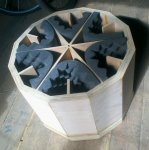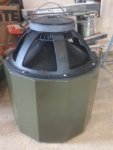I have not started the build yet - still collecting drivers! I shall be doing all cuts on a bench saw and radial-arm saw, with a hint of copy- and template-guided routing thrown in. To keep the weight down and reduce resonances, I am toying with the idea of sandwich panels, using a PVC honeycomb core (Nidaplast) with vacuum-bagged skins of aluminium or marine ply.Karl how did you get the wood cut for yours? if I might asked.
Currently my time is taken up with a new batch of 18" sealed subs to keep up:



